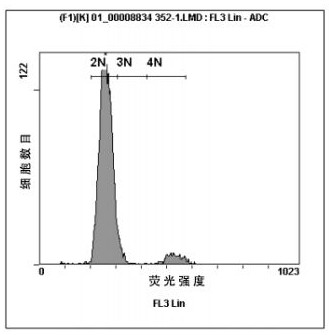A method for inducing tetraploids of a new variety of long oyster "Haida No. 2"
A technology for long oysters and new varieties is applied in the field of long oyster polyploid induction, which can solve the problems of chromosome loss, inability to guarantee tetraploidy, low survival rate of larvae, etc., and achieve the effect of improving the survival rate
- Summary
- Abstract
- Description
- Claims
- Application Information
AI Technical Summary
Problems solved by technology
Method used
Image
Examples
Embodiment
[0026] A method for inducing tetraploids of the new species of long oyster "Haida No. 2", comprising the following steps:
[0027] (1) Select the 8-12cm in size, the left and right shells and the mantle are golden yellow, and the diploid of the 2-year-old long oyster "Haida No. 2" new species is the broodstock, and transfer it from the breeding sea area to the nursery 3 months in advance Workshop for gonadal stimulation.
[0028] (2) Among the diploids of the new species of long oyster "Haida No. 2", select female and male individuals with well-developed gonads as broodstock after anatomical microscope inspection, dissect the eggs and filter them with a 500-mesh sieve to remove tissue fragments. The eggs are then added to the sand-filtered seawater of the multivitamin solution for maturation.
[0029] (3) Microscopically check the degree of egg maturation and whether there is sperm contamination, and then fertilize the fully matured eggs and vigorous sperm in sand-filtered se...
PUM
 Login to View More
Login to View More Abstract
Description
Claims
Application Information
 Login to View More
Login to View More - R&D
- Intellectual Property
- Life Sciences
- Materials
- Tech Scout
- Unparalleled Data Quality
- Higher Quality Content
- 60% Fewer Hallucinations
Browse by: Latest US Patents, China's latest patents, Technical Efficacy Thesaurus, Application Domain, Technology Topic, Popular Technical Reports.
© 2025 PatSnap. All rights reserved.Legal|Privacy policy|Modern Slavery Act Transparency Statement|Sitemap|About US| Contact US: help@patsnap.com



